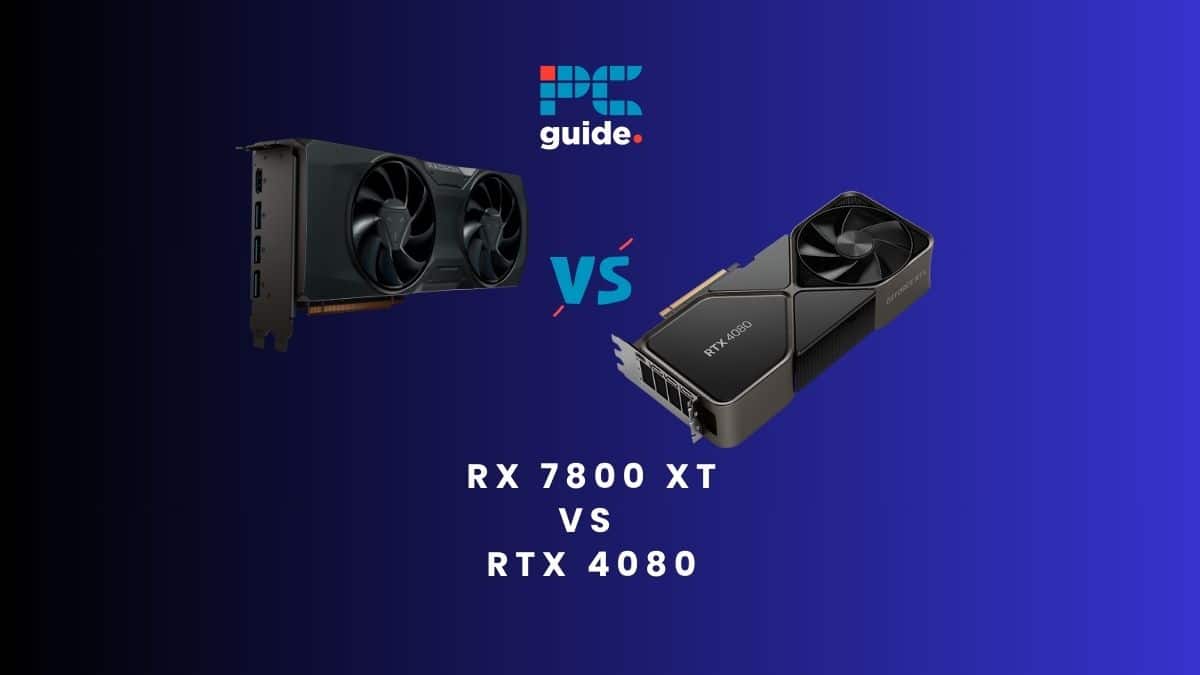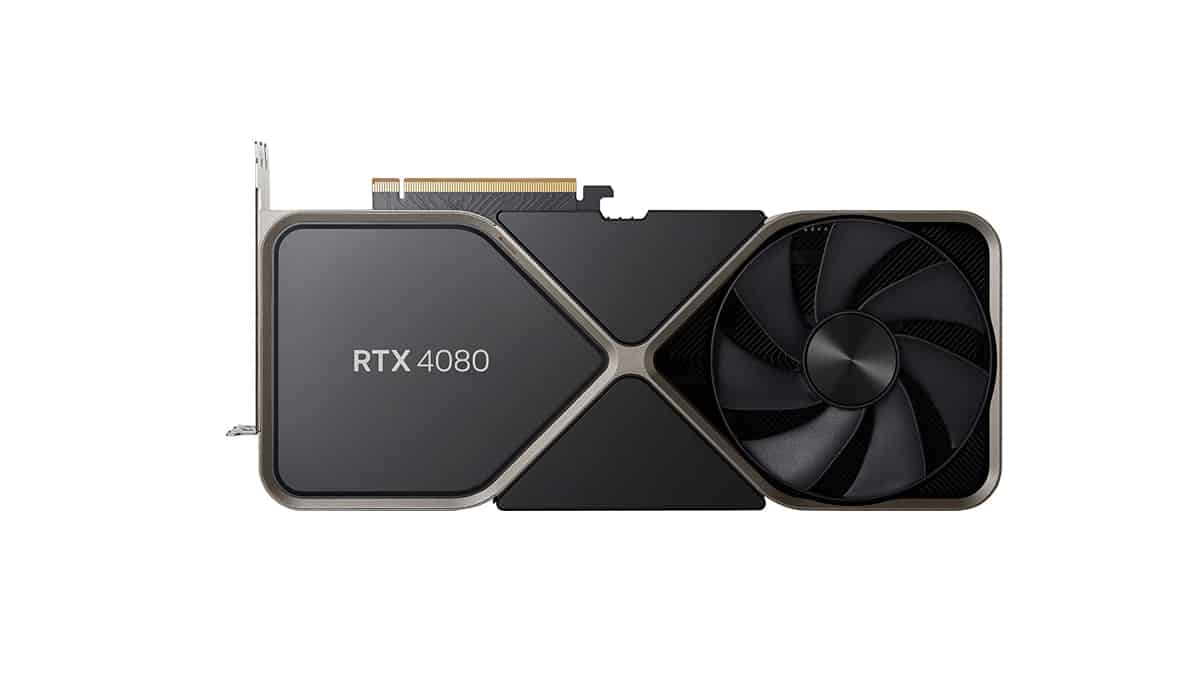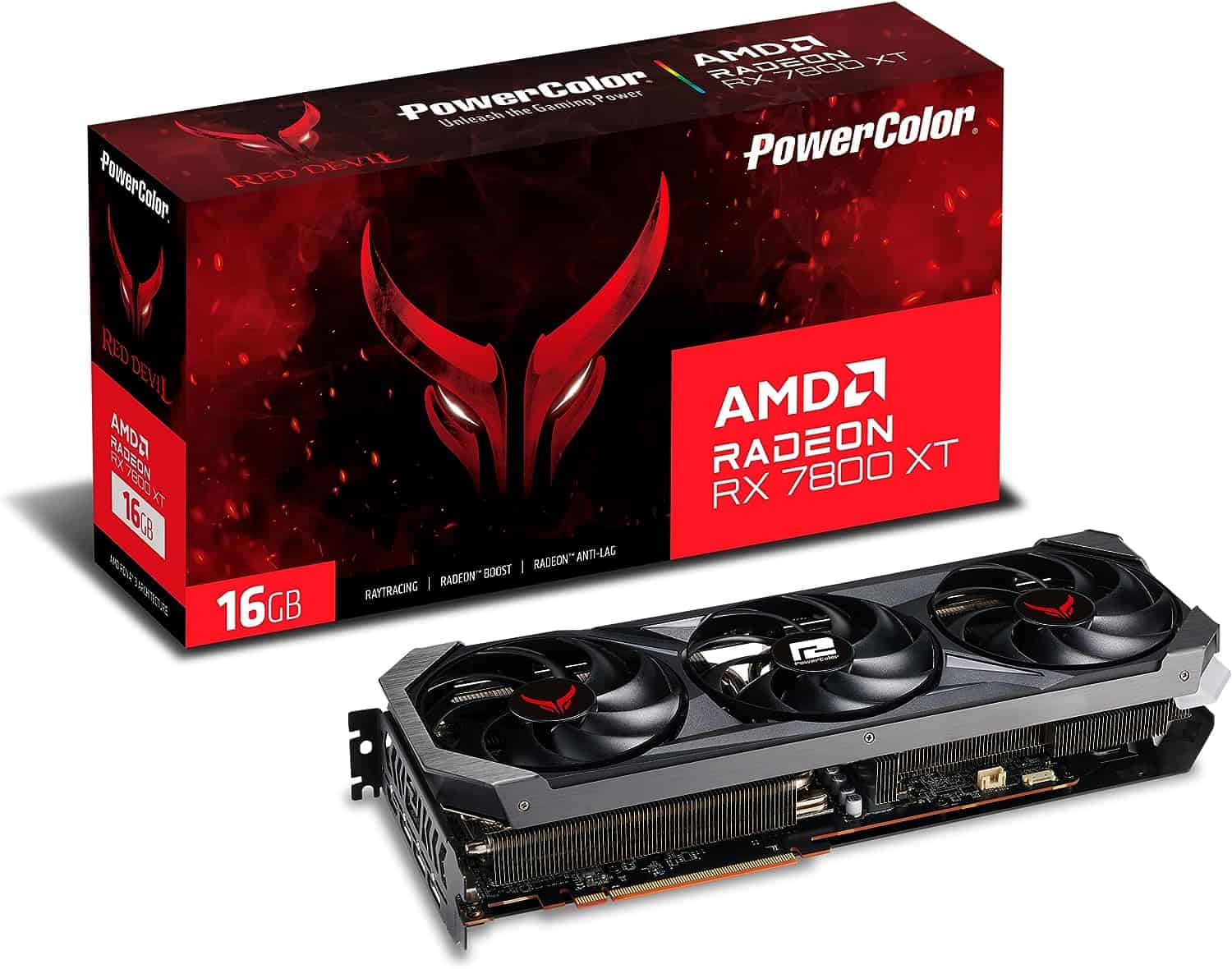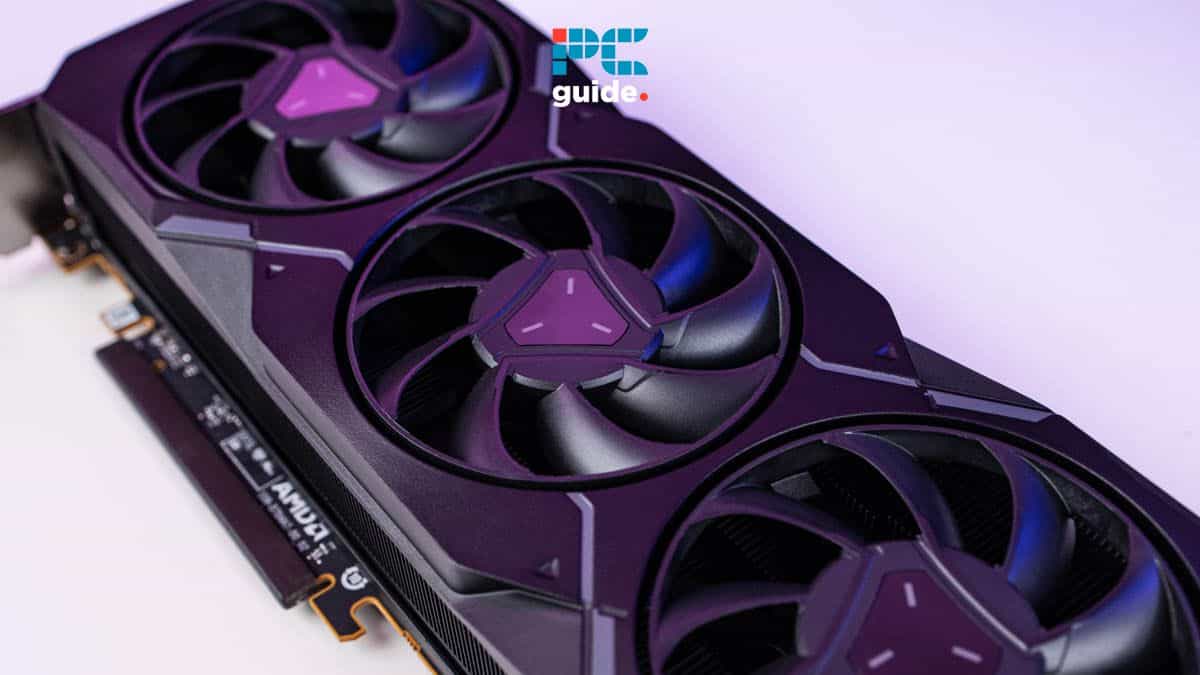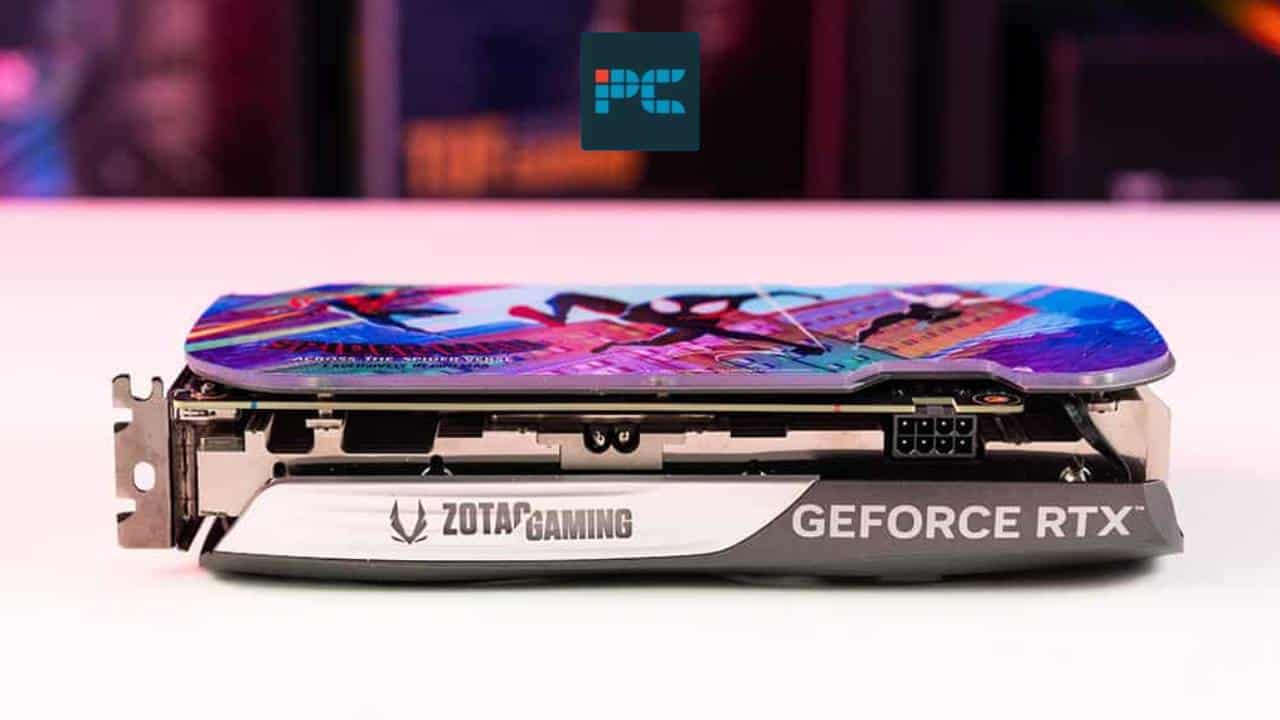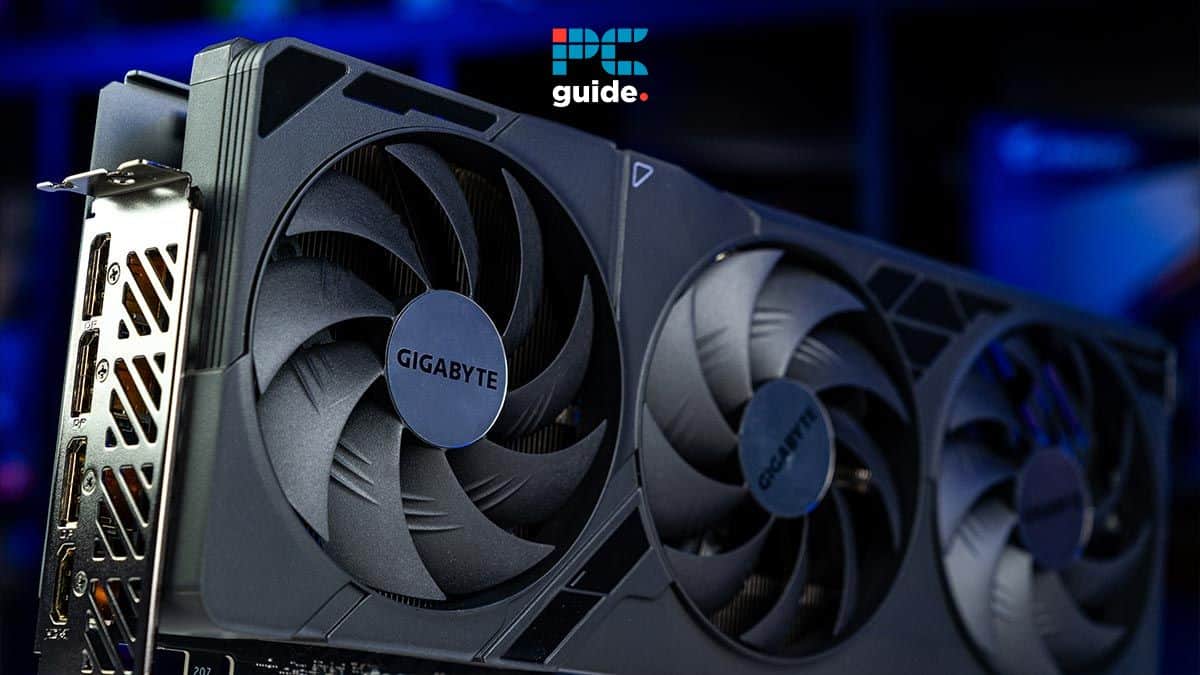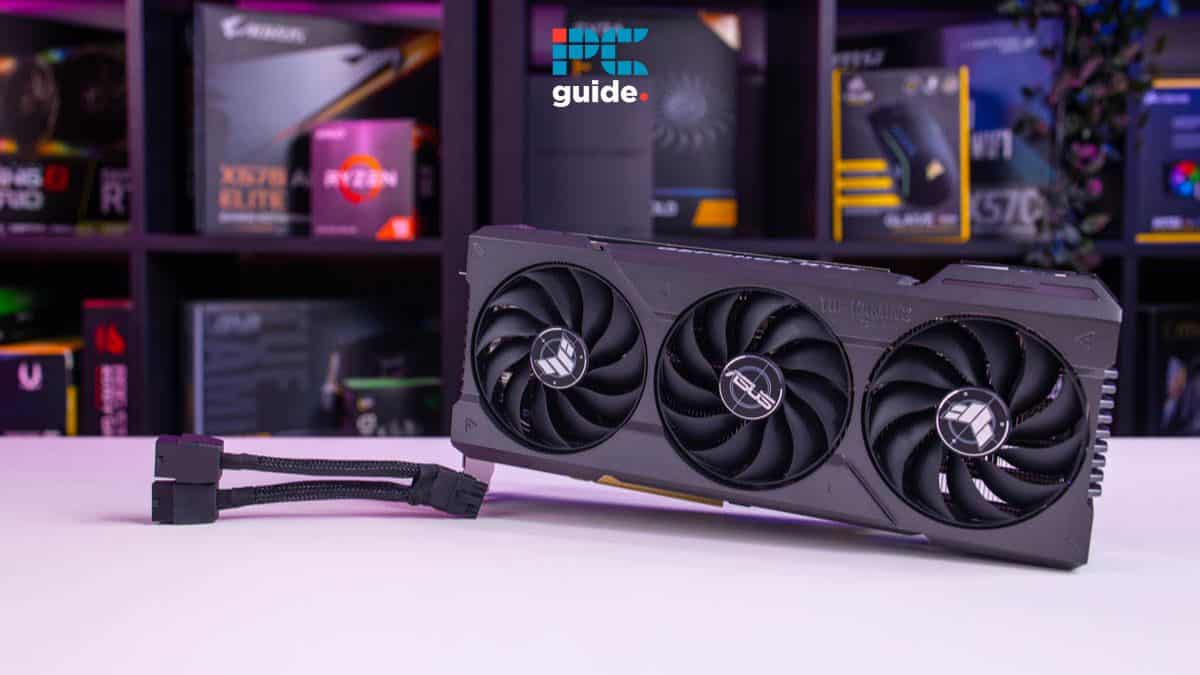In the face-off of RX 7800 XT vs RTX 4080, we’re met with an intriguing blend of graphics prowess and strategic market positioning. Nvidia’s RTX 4080, revered as the second flagship GPU, squares up against the juggernaut force of AMD’s flagship RX 7800 XT. Now, with AMD’s soon-to-be-released AMD Radeon RX 7800 XT stepping into the ring, let’s delve into how it measures up against Nvidia’s behemoth.
RX 7800 XT vs RTX 4080: Specs
At a cursory glance, the RTX 4080 and RX 7800 XT may appear similar with their identical 16GB VRAM and 256-bit memory interface, but a deeper dive reveals diverging paths in their architectural choices and performance capabilities.
The Nvidia Geforce RTX 4080 boasts a staggering 9728 CUDA cores, dwarfing the RX 7800 XT’s 3840 cores. This sheer difference in core count, paired with the 4080’s higher base and boost clock speeds (2205 MHz and 2505 MHz respectively) compared to the 7800 XT’s 1800 MHz and 2430 MHz, underscores Nvidia’s commitment to pushing the boundaries of raw performance.
| Specifications | RTX 4080 | RX 7800 XT |
|---|---|---|
| Architecture | AD103 | Navi 32 |
| CUDA cores | 9728 | 3840 |
| VRAM | 16 GB GDDR6X | 16 GB GDDR6 |
| Memory Interface Width | 256-bit | 256 bit |
| Memory bandwidth | 716.8 GB/s | 620.8 GB/s |
| Process Technology | TSMC 5nm | TSMC 5nm |
| Base clock speed | 2205 MHz | 1800 MHz |
| Boost Clock speed | 2505 MHz | 2430 MHz |
| Graphics Card Power (TDP) | 320W | 263 W |
| L3 cache | 0 | 64 MB |
| MSRP | $1,199 | $499 |
| DisplayPort | 1.4a | 2.1 |
| TDP | 320 W | 263 W |
While both GPUs are fabricated using the advanced TSMC 5nm process technology, other technical disparities are evident. For instance, the RTX 4080 leads in memory bandwidth at 716.8 GB/s, a noticeable gap from the RX 7800 XT’s 620.8 GB/s. However, the RX 7800 XT does have its own unique advantage with a 64 MB L3 cache, a feature absent in the 4080.
In terms of power consumption, the robust capabilities of the RTX 4080 do come at a cost, demanding a power draw of 320W, compared to the more modest 263W of the RX 7800 XT. Overall, while the RX 7800 XT has its merits, the RTX 4080 emerges as a formidable contender, showcasing a design aimed at catering to the highest echelons of performance demand.
RX 7800 XT vs RTX 4080: Performance
Performance evaluation remains one of the most decisive factors when comparing GPUs, and in the RX 7800 XT vs RTX 4080 showdown, it’s no different. AMD’s claims that the RX 7800 XT will comfortably surpass the 4070 are intriguing, while we should bear in mind that the RX 7900 XT is AMD’s tier 2 option behind the RX 7900 XTX.
Nvidia’s leap from the 4070 to the 4080 isn’t just a step – it’s a giant stride. The specs alone, especially the vast number of CUDA cores in the 4080, already hint at the RTX 4080’s dominance in terms of sheer computational power. Nvidia’s DLSS and ray tracing capabilities further accentuate its performance credentials. While at more modest settings, the difference between the two GPUs may not be stark, the advantage becomes pronounced at high-end gaming.
The RTX 4080, backed by its advanced DLSS, promises 4K gaming experiences at the highest settings, maintaining impressive FPS rates. This level of detail, combined with smooth gameplay, is something AMD’s FidelityFX 3 still strives to achieve. Of course, we’ll have to wait to see what benchmark results third-party tests reveal.
RX 7800 XT vs RTX 4080: Price
When it comes to the price tag, these two GPUs inhabit different realms entirely. The RX 7800 XT has set its sights on the discerning mid-range consumer at launch – someone willing to invest in quality but still with a keen eye on the budget. Hopefully, that remains true on the September 6th release date.
On the other hand, the RTX 4080 caters to the upper echelons of the gaming and content creation universe, targeting professional gamers, content creators, and streamers. The stark difference in their intended market segments is palpably reflected in their MSRP: the high-end RTX 4080 is priced at a staggering $1,199, while the more budget-friendly RX 7800 XT comes in at a moderate $499.
PC Guide view
The superiority of the RTX 4080 in terms of raw performance and capability is evident – after all, it is a high-end GPU. However, the narrative changes once we factor in the price. The RX 7800 XT, priced at less than half the cost of the RTX 4080, presents an intriguing proposition from AMD’s RX 7000 series graphics cards.
For the discerning consumer, evaluating the value they’re getting for each dollar spent is crucial. In this matchup, the RX 7800 XT emerges as a dark horse, offering robust performance that surpasses expectations for its price bracket. While the RTX 4080 may be the performance champion, the RX 7800 XT undoubtedly takes the gold in the price-to-performance category, making it a formidable contender for those seeking a blend of capability without an exorbitant price tag.
- Now read: Where to buy the RX 7800 XT

